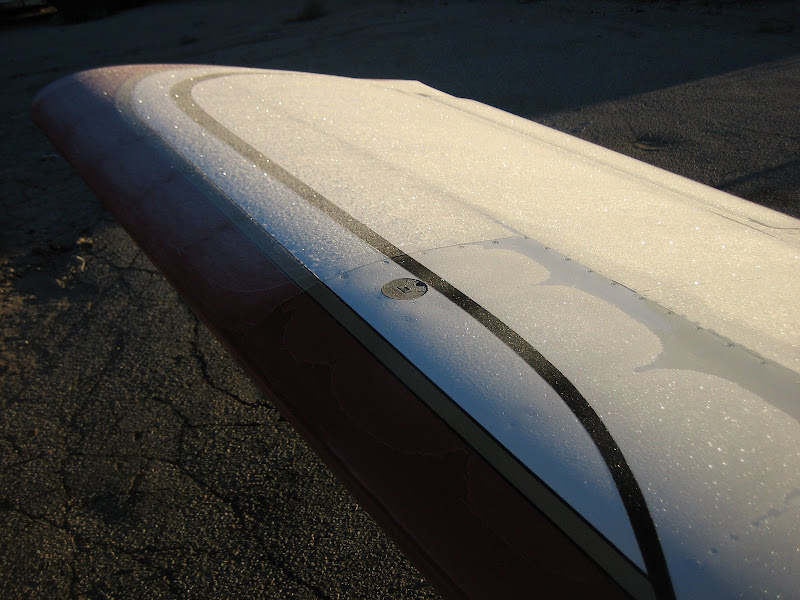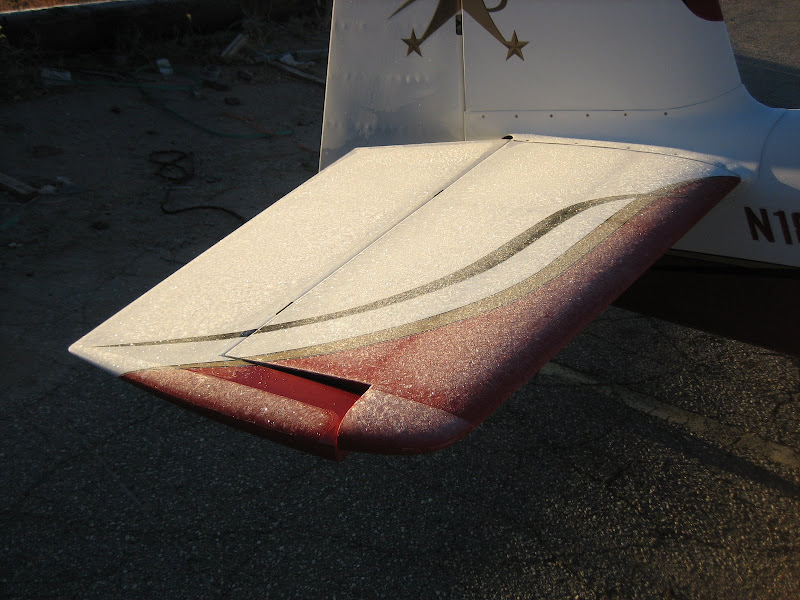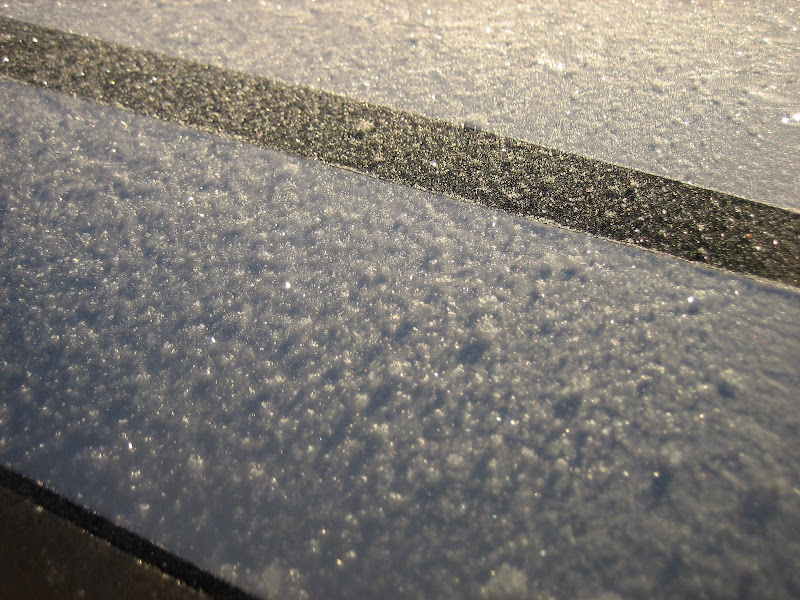When I meet people for the first time, they frequently say "Oh, so you're from Texas, right?" and I quickly correct them, saying "Actually, I'm from Minnesota - I just LIVE in Texas!". But come to think of it, I have spent many more years flying in Texas than I ever did in Minnesota, and today I realized that I even THINK like a Texas pilot. I was trying for an early, crack of dawn launch from big Bear Lake in California to get back to Houston earlier in the day, and since Louise needed to head down the hill about 0600 to catch her commercial flight back to D.C., I asked her to drop me off and wait until I got the engine started before departing, Well, the engine fired up right away, but the lights from our headlamps showed I wasn't going anywhere until the sun came up. What caught my attention was a thick blanket of frost on the entire airplane.



Now for many of you, this is nothing unusual, but even when I was back in the frozen north, I rarely had to deal with a thick coat of frost - a six inch blanket SNOW, yes, but frost...well, I have read so many magazine articles and safety posts over the years about the affects of even minimal layers of frost, but it has usually been an academic exercise for me - especially living on th gulf coast!
Today I dredged those article back out of my brain, along with the thought that I was sitting at an altitude of almost 7,000'....and I told Louise to have a safe drive down to LA - I'd head back to the cabin and wait for awhile until the sun came up and started to melt things off! I sure didn't want to flight test a fuzzy layer of ice in the boundary layer....
Even though the sun did a good job of melting the frost on the black parts of the airplane, I got impatient with the huge white areas, and discovered a good use for my EAA membership card. Thirty minutes of scraping and I not only had the Val ready to fly, but I was warmed and exercised from the effort, and the take-off went without a hitch.
All this is a long way of saying that fall is here, and frost is going to be more common. I hadn't given it a thought for so long that I simply had to revert to remembering basic training admonitions - no frost is acceptable! If you deal with it all the time, it is second nature - and if you don't, then the one tie you find it, don't forget those basics.
(However, it was an awful nice way to watch the breaking dawn up in the mountains...not too cold, the smell of pine trees in the air....it was hard to mount up and head back to Houston!)
Now for many of you, this is nothing unusual, but even when I was back in the frozen north, I rarely had to deal with a thick coat of frost - a six inch blanket SNOW, yes, but frost...well, I have read so many magazine articles and safety posts over the years about the affects of even minimal layers of frost, but it has usually been an academic exercise for me - especially living on th gulf coast!
Today I dredged those article back out of my brain, along with the thought that I was sitting at an altitude of almost 7,000'....and I told Louise to have a safe drive down to LA - I'd head back to the cabin and wait for awhile until the sun came up and started to melt things off! I sure didn't want to flight test a fuzzy layer of ice in the boundary layer....
Even though the sun did a good job of melting the frost on the black parts of the airplane, I got impatient with the huge white areas, and discovered a good use for my EAA membership card. Thirty minutes of scraping and I not only had the Val ready to fly, but I was warmed and exercised from the effort, and the take-off went without a hitch.
All this is a long way of saying that fall is here, and frost is going to be more common. I hadn't given it a thought for so long that I simply had to revert to remembering basic training admonitions - no frost is acceptable! If you deal with it all the time, it is second nature - and if you don't, then the one tie you find it, don't forget those basics.
(However, it was an awful nice way to watch the breaking dawn up in the mountains...not too cold, the smell of pine trees in the air....it was hard to mount up and head back to Houston!)







